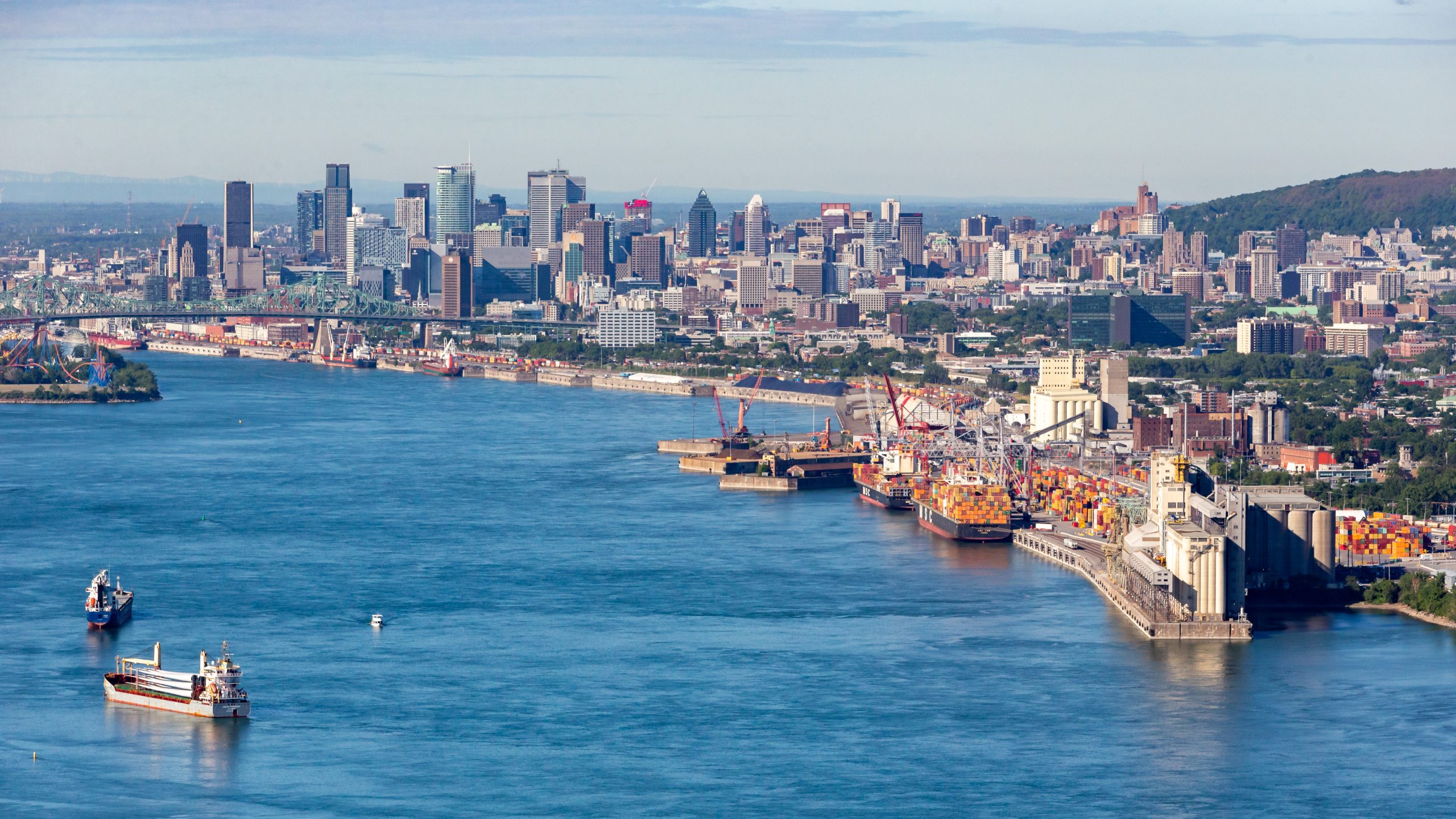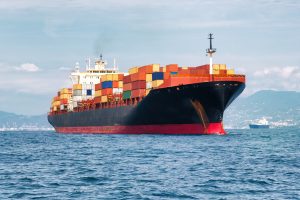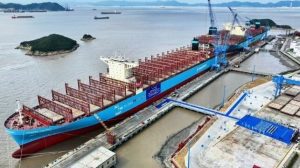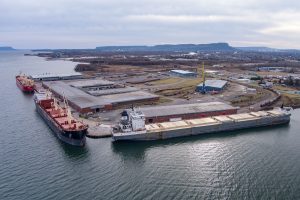Speaking at a luncheon organized by the Chamber of Commerce of Metropolitan Montreal (CCMM), President and CEO of the Montreal Port Authority (MPA) Julie Gascon today outlined her ambitious vision on how to develop the St. Lawrence River and expressed deep concern about the impacts of the labour relations impasse at the Port of Montreal.
(The Montreal longshore union launched an “unlimited strike” on October 31 uniquely targeting Termont, which operates two terminals accounting for 40% of the port’s container cargo. Subsequently, railway services to and from the port have been suspended.)
Ms. Gascon used her visit to the CCMM to express her deep concern about the pressure tactics underway at the Port of Montreal. She called for federal intervention to end this long-running dispute, which is having major impacts on the economy, businesses and the community.
“I believe that the best agreements are negotiated at the table. But let’s face it, there are no negotiations, and that the government must act by offering both sides a path to true industrial peace,” she said.
Although the longshore workers’ union CUPE Local 375 and the Maritime Employers Association (MEA) have been in the process of renewing their contract for over a year, several pressure tactics have disrupted port operations in recent weeks. This labour dispute is the third in four years at the Port of Montreal. Negotiations are currently deadlocked, with various pressure tactics on both sides seriously affecting port operations. The MPA considers that all container handling capacity at international terminals are at a standstill.
The value of goods moving through the Port of Montreal is close to $400 million every day, and they generate $268 million in economic activity. Consequently, any slowdown has a considerable adverse impact on Canada’s economy. The Port of Montreal is an international trade frontier that must remain open and free-flowing.
Ms. Gascon affirmed: “Montreal’s logistics ecosystem has grown phenomenally. But we’re losing that momentum. There’s no denying that our reputation has been harmed by uncertainty over the reliability of our activities, and in the long run, we’re losing competitiveness. We need to be able to deliver stability and predictability.”
Ambitious vision for the St. Lawrence corridor
In her speech, Ms. Gascon reaffirmed her organization’s priorities for the coming years: to have a positive impact on communities, to provide a motivating workplace for employees, to ensure the long-term viability of port assets, and to complete the Port of Montreal’s expansion to Contrecœur while respecting the environment. This project is vital to secure Montreal’s place in maritime transport, support the growth of local businesses and boost resilience in the Canadian supply chain.
“The Port of Montreal’s expansion is an ultra-strategic project that players in the supply chain have been waiting for with high hopes, and that we will carry out in full compliance with environmental conditions. No less than a generational project!” said Ms. Gascon.
It was also an opportunity for Ms. Gascon to present an ambitious vision for the St. Lawrence-Great Lakes corridor, a huge market served by the Port of Montreal, home to 66% of the population and 75% of Canadian manufacturing production. She called for concerted action to chart an ambitious roadmap for tomorrow’s St. Lawrence-Great Lakes supply chain.
“The development potential for the St. Lawrence-Great Lakes corridor is tremendous. We need to join forces and mobilize the ports, the logistics industry and the business community to strengthen our supply chains and meet the demands of our market,” said Ms. Gascon.
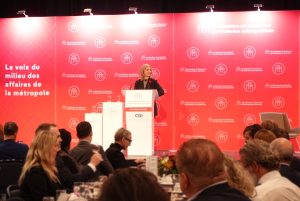
(Photos of Julie Gascon and Port of Montreal)


